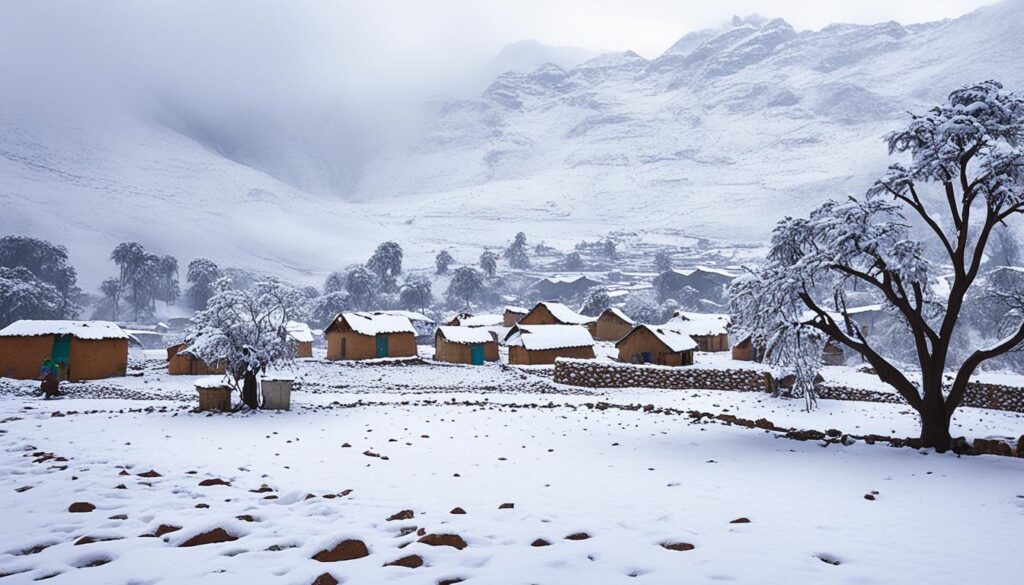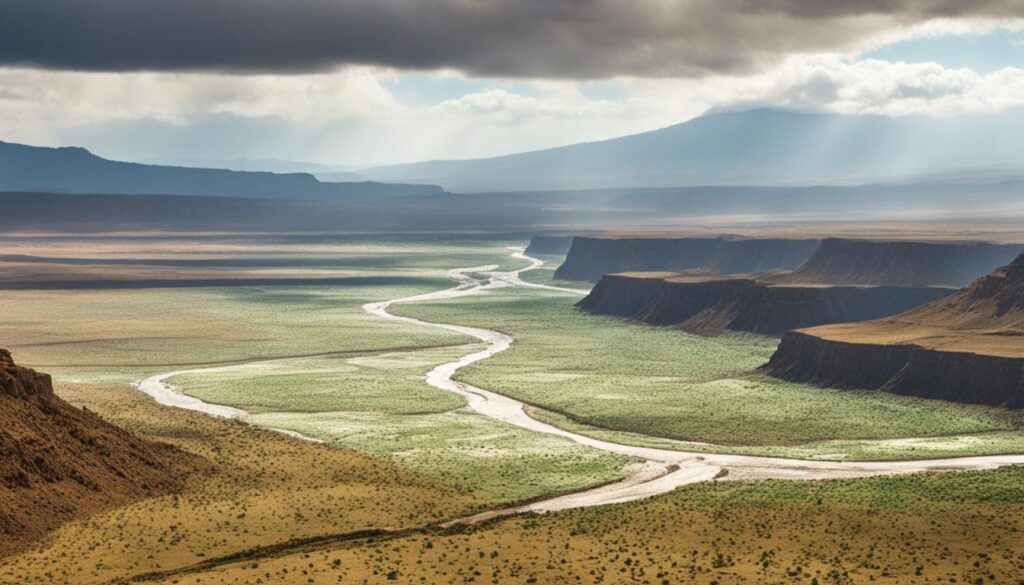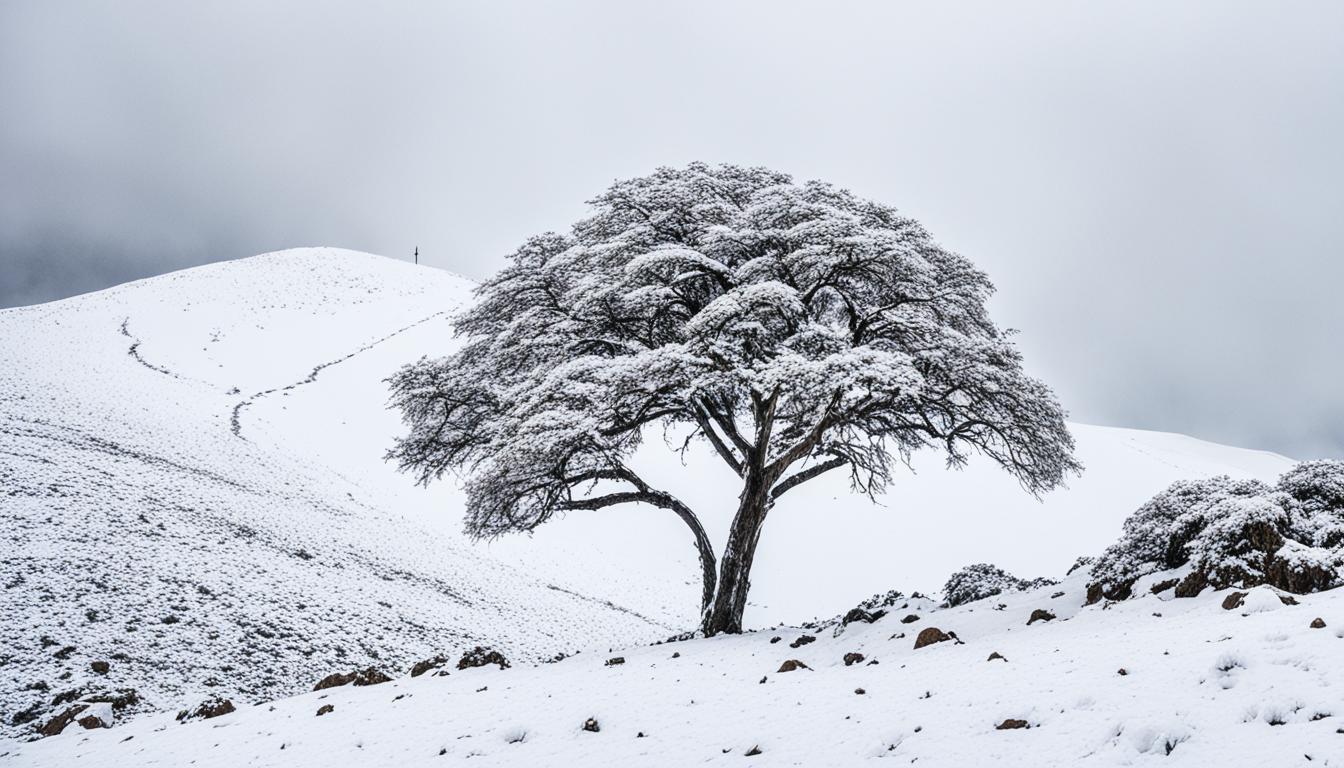Does It Snow in Ethiopia?
Did you know that snowfall is not just limited to the icy regions of North America or Europe? In fact, there’s a surprising destination that experiences its own winter wonderland – Ethiopia! Contrary to popular belief, this East African country is not devoid of snowfall. In specific mountainous areas, Ethiopia transforms into a snowy paradise, with beautiful landscapes covered in a blanket of white. Let’s uncover the fascinating truth about snow in Ethiopia and discover the hidden gem of African winters.
Key Takeaways:
- Ethiopia does experience snowfall in specific mountainous areas, such as Ras Dashen and the Bale Mountains.
- The winter season in Ethiopia, most prominent in July, brings colder temperatures and ample snowfall.
- Other countries in Africa, including Lesotho, Morocco, South Africa, and Algeria, also witness snowfall in certain regions.
- Ethiopia’s climate is diverse, with the highlands experiencing mild temperatures and occasional snowfall.
- Despite misconceptions, snowfall in Ethiopia is not rare but occurs every winter season, creating a stunning winter wonderland.
Snowfall in Ethiopian Mountains
The mountains of Ethiopia, such as Ras Dashen and the Bale Mountain range, experience snowfall during the winter season. These mountain peaks reach heights of over 15,000 feet and have temperatures that drop well below freezing. This allows for the snow to accumulate and create a scenic winter landscape. The snowfall in these mountains is not sporadic but occurs every winter, dispelling the misconception that it rarely snows in Ethiopia.
“Snow provokes responses that reach right back to childhood.”
– Andy Goldsworthy
Ethiopia’s Winter Season

During Ethiopia’s winter season, which is most prominent in July, temperatures drop significantly, particularly in the mountainous regions. This colder weather sets the stage for an enchanting phenomenon: snowfall. In areas like Ras Dashen and the Bale Mountains, temperatures can plummet well below freezing, allowing for sustained snowfall to occur. This winter wonderland lasts for one to two months, providing ample time for the snow to accumulate, creating a breathtaking landscape that captivates both locals and visitors alike.
As the temperatures dip, Ethiopia experiences its highest snowfall of the year during this winter season. The combination of colder weather and mountainous terrain allows for the perfect conditions for snow to coat the landscape.
The Magical Transformation
Witnessing Ethiopia’s snow season is truly a magical experience. The once familiar sights are transformed into a winter wonderland, with snowy peaks and frost-covered landscapes. It’s a rare treat for those who typically associate snow with colder climates far from Africa.
“The beauty of Ethiopia’s winter season is unparalleled. The sight of snow in this unique landscape is a testament to the country’s diverse natural wonders.” – Local Travel Guide
Exploring the snow-covered mountains offers a different perspective and opens up a range of activities for adventure enthusiasts. From snowboarding and skiing down the slopes to snowshoeing across the powdery terrain, there are endless opportunities to embrace the snowy delight.
Understanding Ethiopia’s Winter Climate
The winter season in Ethiopia brings colder temperatures, making it the ideal time for snowfall. The mountainous regions experience more frigid weather as a result of their higher elevations. This creates the perfect conditions for the formation and accumulation of snow. The snowy landscape stands in stark contrast to the rest of the year when Ethiopia enjoys relatively warmer temperatures.
| Elevation | Average Winter Temperature | Snowfall Amount |
|---|---|---|
| Ras Dashen | Below freezing | Significant accumulation |
| Bale Mountains | Below freezing | Substantial snowfall |
As seen in the table above, the higher elevations of Ras Dashen and the Bale Mountains experience below-freezing temperatures during the winter season, resulting in substantial snowfall. This climate phenomenon contributes to the stunning snow-capped peaks that make Ethiopia’s winter season truly remarkable.
Other Countries in Africa with Snowfall
While snowfall in Africa is not commonly associated with the continent, there are other countries besides Ethiopia that experience snowfall. Lesotho, a landlocked country in southern Africa, sees occasional snowfall during its winter season. Morocco, with its diverse landscapes, experiences snowfall in certain regions, particularly in the Atlas Mountains. South Africa also has regions, such as the Drakensberg Mountains, where snowfall occurs during the winter months. Algeria, known for its desert climate, also witnesses infrequent snowfall in its mountainous areas. These examples show that snowfall is not exclusive to Ethiopia in Africa.
Other Countries in Africa with Snowfall:
- Lesotho – Occasional snowfall during the winter season.
- Morocco – Snowfall in certain regions, particularly in the Atlas Mountains.
- South Africa – Snowfall in regions like the Drakensberg Mountains during winter.
- Algeria – Infrequent snowfall in its mountainous areas despite its desert climate.
Ethiopian Climate and Precipitation

Ethiopia, with its vast size and diverse landscapes, showcases a range of climatic conditions. The Ethiopian highlands, in particular, boast a mild climate, characterized by relatively stable temperatures throughout the year. While snowfall is not common in most parts of Ethiopia, the high peaks, such as Ras Dashen, can witness occasional snowfall, adding a touch of enchantment to the landscape.
One notable feature of Ethiopia’s climate is its high levels of precipitation. The country’s wet season occurs between March and September, with the highlands receiving significant rainfall from June to September. This abundance of moisture contributes to the growth of lush vegetation and the development of diverse ecosystems across Ethiopia.
Ethiopian Climate and Precipitation at a Glance
| Climate | Precipitation |
|---|---|
| Mild | High levels of rainfall |
| Generally stable temperatures | Wet season: March to September |
| Occasional snowfall in high peaks | Rainfall peaks: June to September |
Despite the lack of snow in most areas, Ethiopia’s climate and precipitation patterns create a fertile environment for diverse flora and fauna to thrive. The combination of a moderate climate, occasional snowfall in the highlands, and ample rainfall contributes to the country’s stunning natural beauty and rich biodiversity.
Conclusion
In conclusion, Ethiopia is a country that experiences snowfall in specific mountainous areas, particularly during the winter season. The high peaks of Ras Dashen and the Bale Mountains receive regular snowfall, transforming the landscape into a captivating winter wonderland. Contrary to common misconceptions, snowfall in Ethiopia is not rare but occurs every year during the winter season.
Despite being located in Africa, Ethiopia demonstrates that snow can exist in diverse climates. The snow-covered mountains in Ethiopia offer a unique opportunity for winter sports enthusiasts and nature lovers to indulge in the beauty of snow. Whether it’s skiing down the slopes or marveling at the stunning snowy scenery, Ethiopia provides an unforgettable snow experience.
So, if you’re eager to witness the ethereal charm of snowfall in Africa, consider exploring the mountainous regions of Ethiopia. Immerse yourself in the tranquility of the snow-covered peaks and discover the extraordinary allure of Ethiopia’s winter season. Don’t miss the chance to make lasting memories in a place where snow blankets the landscape.





